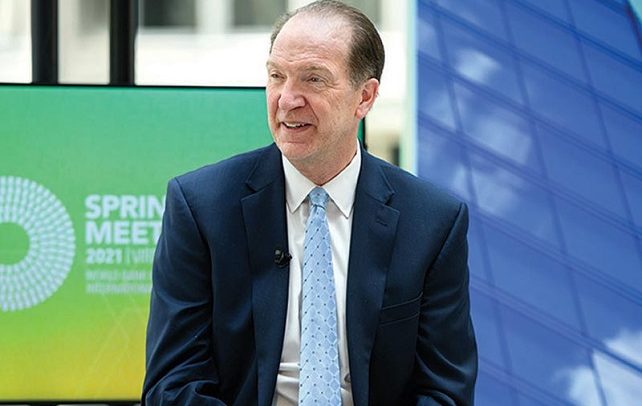David Malpass, World Bank Boss
THE WORLD Bank says that domestic food price inflation remains high around the world, with high inflation continuing in almost all low and middle-income countries and the share of high-income countries with high inflation increasing sharply.
According to the international financial institution, the agricultural, cereal, and export price indices were stable over the past two weeks, with the agricultural and cereal price indices 1 per cent higher than two weeks ago.
In its latest food security report issued on Wednesday, the World Bank stated that challenges to food security persist, despite the first Ukrainian grain shipment.
The report said after the July 22 agreement that representatives from Russia, Türkiye, Ukraine, and the United Nations signed in Istanbul, Türkiye, the first ship carrying grains left the southern port of Odesa, Ukraine, on August 1, and three additional ships departed on August 5.
A recent blog by the International Food Policy Research Institute (IFPRI) has projected that this opening up of Ukraine’s Black Sea ports should ease market prices. Although wheat and corn prices returned to pre-war levels by July 1 and July 17, respectively, prices for both cereals remain 50 per cent higher than 30 months ago.
Food Price Inflation
The report said information from the latest month between April and July 2022 for which food price inflation data are available shows high inflation in almost all low and middle-income countries.
It continued that 92.9% of low-income countries, 92.7% of lower-middle-income countries, and 89% of upper-middle-income countries have seen inflation levels above 5%, with many experiencing double-digit inflation.
The share of high-income countries with high inflation has also increased sharply, with about 83.3% experiencing high food price inflation, the report added.
It said the most affected countries are in Africa, North America, Latin America, South Asia, Europe, and Central Asia, noting in real terms, food price inflation exceeded overall inflation (measured as year-on-year change in the overall CPI) in 81% of the 153 countries for which food CPI and overall CPI indexes are both available.
West and Central Africa
The World Bank said in West and Central Africa, high food prices and pervasive conflict continue to drive food insecurity, which is projected to affect more than 38 million people from June to August (RPCA 2022).
“Prices in West Africa, especially for staple foods, are at or near record levels, driven by below-average 2021/22 production and disrupted trade flows,” the report noted.
“The ongoing war in Ukraine, which has increased global food, energy, and agricultural input prices, has exacerbated atypical price trends for local and imported foods,” it pointed out.
The report said in addition to reduced financial access to food, conflict is one of the critical drivers of food insecurity, especially in the Liptako Gourma region and northwest Nigeria.
Russia War
The World Bank said despite favourable plant growth conditions in many parts of the Sahel, fertiliser shortages are expected to limit food production.
“West Africa is highly dependent on fertiliser imports from Russia and Ukraine. With the ongoing war causing significant fertiliser shortages and price increases, a deficit of fertiliser of 1.2 million to 1.5 million tons is projected,” it added.
It continued, “These shortages may translate to losses in cereal production of approximately 20 million tons – equivalent to more than one-quarter of production in 2021.”
The report said in the very short term, fertiliser scarcity will affect Burkina Faso, Ghana, and Mali most acutely, with supply gaps for this year’s agricultural campaign ranging from 69% (Ghana) to 88% (Mali) as of April 2022 (ECOWAS, FAO, and WFP 2022).
BY Ernest Kofi Adu


